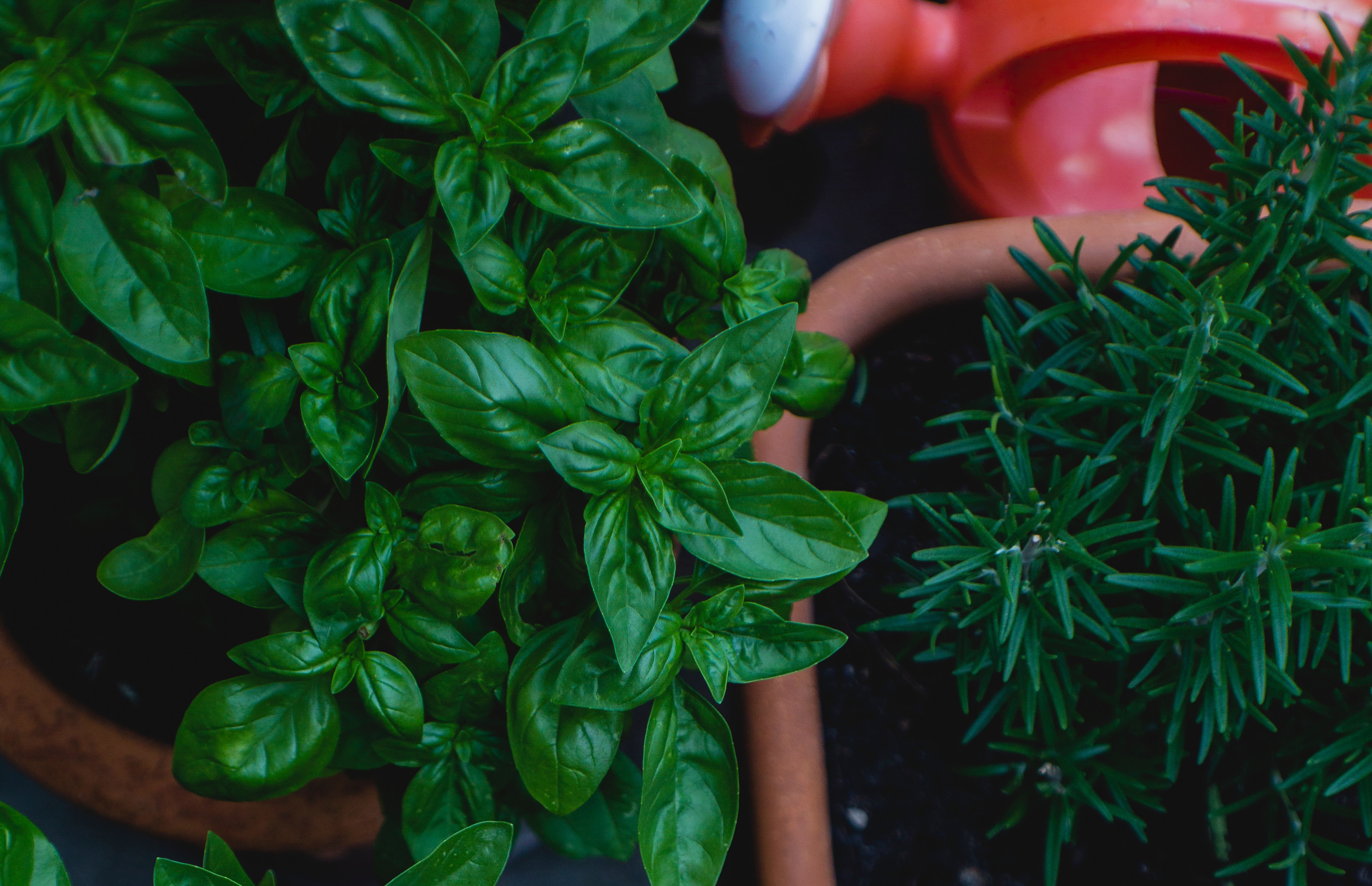Whether you’re a full-timer, want some beautiful plants to add a pop of color, or desire to have fresh herbs handy for when you’re cooking in the kitchen, you can still use your green thumb even when you’re RVing.
What you grow depends on your objective: ornamental or useful? Regardless, here is some information for when it comes to a mobile garden with an RV as a home base.
If you’re in one spot…
A few grow bags may be all you need. When gardening season is done, they can easily be folded up and stored. You can also choose to use small raised beds, multiple container gardens, or hanging gardens. Keep your plants watered and trimmed.
Take some time to consider the location and overall landscape of your garden on your campsite, as others will be walking by and management will notice if the garden isn’t well-groomed. Keep things nice and cleaned up so that the garden is not only fruitful but aesthetically pleasing. Check with the management to make sure an outdoor garden is permitted on the lot and whether there are any stipulations.
If you go from place to place…
For indoor plants, choose a container that’s large enough to stand the plant’s expected growth. Line the bottom of the container with stones to prevent the roots from becoming waterlogged. Then add compost or potting soil. Place anti-skid pads at the bottom of each container to reduce sliding. Ferns, ivy, and hostas tend to do well in an RV environment, as do succulents and cactuses (a lot less water), but you can get away with some flowering plants such as calla lilies. Place the plants next to a window that offers plenty of natural light. Pack containers together tightly, such as if you’re using mason jars, and then add a ribbon or piece of wood to keep them packed away along the shelf or windowsill so that they don’t slide during transport. Not only do indoor plants add charm to a space, they can also improve the air quality. Keep this in mind for your first few trips out of storage. Use your imagination!
What about plants that need to be outdoors? Many vegetables and herbs need at least six hours of sunlight to grow well and stay healthy. These plants can be kept in a variety of containers as long as they are easy to pack up and transport. Container gardens can have multiple types of plants in the same place; just place the container in the truck bed or shower for transport. When you pull into the campground, get the plants outside as soon as possible and give them a nice drink. Even when you make a pit stop somewhere during travel, if it’s longer than a couple hours it might be worth taking out the plants to soak up some sun. Popular herbs include rosemary, basil, and thyme. As for flowers, petunias, begonias, geraniums, and violets tend to stand up well.
Be aware of state rules…
Moving plants from state to state can have its own implications. Some plants can’t be moved across state lines, but it depends on the state. This is to reduce the chance of disease outbreaks or insect infestations. Many invasive species “hitch a ride” on plants and vehicles, further promoting the spread as well as the necessary response to control them. Michigan is not as strict as California and Florida, but here are some tips if you’ll be crossing state lines:
- Clean your RV before you enter Michigan. Check wheel wells and hard-to-see areas for soil, eggs, or insects.
- Pack plants so that they are easily accessible in the event of an inspection.
- Use sterilized potting soil for all your plants.
- When purchasing plants, not seed, ask the retailer if they comply with federal and state quarantine restrictions to ensure their plants are free of invasive pests.

